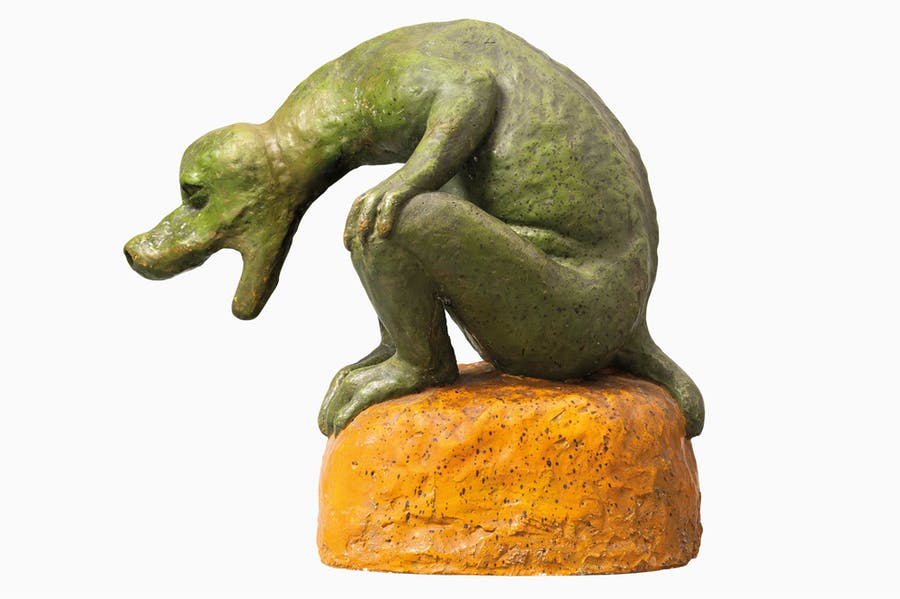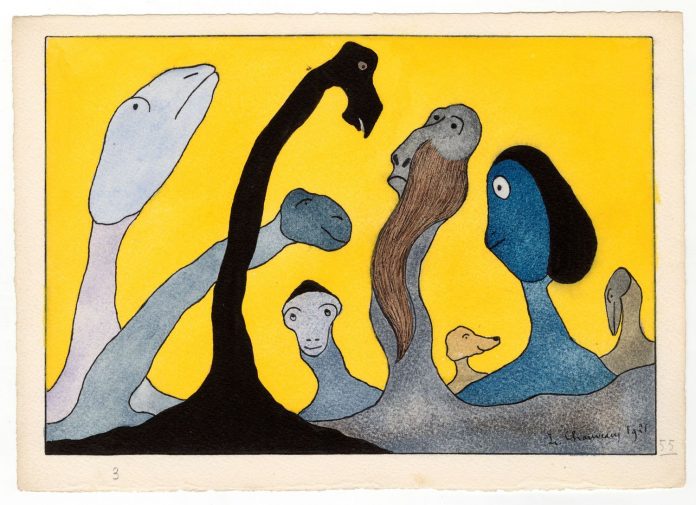Exhibition “In the Land of Monsters. Leopold Chauveau “, which turned one of the halls of the Orsay Museum into something like a paleontological museum with prehistoric creatures, is dedicated to the self-taught artist, surgeon Leopold Chauveau (1870–1940).
For paleontology, these creatures, captured in sculptures and childishly bright drawings, are of no scientific interest, since they are the fruit of the imagination of their creator.
Chauveau became a physician at the insistence of his family, but, never resigned himself to an unloved profession, from 1905 he began to study sculpture in parallel. The newly-born artist carved, sculpted, and painted only monsters, whose images were inspired by childhood memories of the Natural History Museum in Lyon, where his father worked, gargoyles hanging from the cornices and drainpipes of Gothic cathedrals, monsters from Japanese prints. At the same time, he did not fall into stylization, but created his own original style – expressive and laconic in sculpture and drawings, and bright and colorful in watercolors.

And these monsters themselves, cute, sometimes funny, were not at all going to scare anyone. Chauveau explained his passion by the fact that the soul of monsters arises from the depths of the earth, their forms caress his fingers.
Chauveau showed them twice at the Parisian Salon d’Automne in 1911 and 1913 but did not receive any response, and after that, he did not even try to exhibit, working only for himself.
His literary destiny was much more successful. In parallel with his art, he wrote fairy tales for children, the first of which were illustrated by Pierre Bonnard, and then by their author himself. They are still successful, even in faraway Japan, where one of Leopold Chauveau’s children’s books – “Stories of an Old Crocodile” (1923) – was revived in 2005 by the famous animator Koji Yamamura.
When the First World War began, art had to be forgotten. Chauveau was a frontline surgeon, lost his wife and two sons.
Becoming a staunch anti-militarist because of these tragic events, he wrote a novel-reportage “Behind the Scenes of the Battle” in 1916. And during World War II, he helped refugees working in the Red Cross. Only once, in 1920, he returned to art summarizing the tragic experience in a series of watercolors “Monstrous Landscapes”.

After the death of Leopold Chauveau, his artistic work, in contrast to the literary, was completely forgotten, until in 2017 the artist’s grandson donated 18 sculptures and 100 drawings of his grandfather to the Orsay Museum. Perhaps, then the idea of this exhibition arose. Its last section includes works of contemporary authors close to him in spirit. One of them is the French video artist Bertrand DeSoto. When he saw the work of a self-taught artist, he called it the missing link between Bosch and Pokemon. That is how he defined Chauveau’s place in the history of art, which he had been looking for for so long.
The exhibition will last until September 13.
























